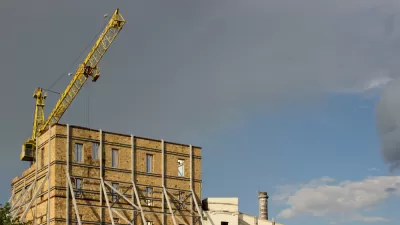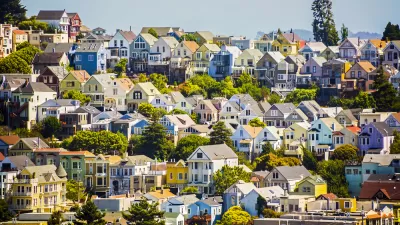There’s more than one way to be excluded from your community.

For decades, activists in Camden, New Jersey, have complained that investment in their city has focused on the downtown and waterfront neighborhoods that attract suburbanites, tourists, and newer residents, to the exclusion of longtime residents in the community. It’s a familiar complaint, the type you might hear from activists in Baltimore about the Inner Harbor. Residents see downtown investment and wonder—why must we depend on the theory of trickle-down economics belief that neighborhoods will be helped by investment downtown? Why can’t we invest in our neighborhoods directly?
Or in other words, as resident Luis Galindez—quoted in Howard Gillette’s book, After the Fall—put it when public funds went toward a new waterfront aquarium in Camden, “We got two and three families living in one house and fish in tanks by themselves . . . we could really have used that money.”
But in Camden, after residents argued for years that there needed to be investment in neighborhoods, a funny thing happened: A vocal group of residents opposed such investment when it came, on the grounds that it would gentrify those neighborhoods.
An example was a plan to demolish and rebuild Camden High School. The state’s Schools Development Authority—which funds and manages school construction in 31 marginalized cities across the state—committed $132.6 million to Camden High. Investment in the school—historically the flagship of the city’s education system and located in the center of Camden’s historically African-American neighborhood—seemed like a direct answer to criticism that investment only happened downtown. Except instead of being lauded by local community members, the announcement deeply divided the community.
In an op-ed, local activist, resident, teacher, and union leader Keith Benson argued that new development is a transparent gentrification tactic:
“The proposal of a new Camden High School is really part of a broader Parkside development strategy intended to benefit a targeted few and victimize lower-income residents. This behavior, sadly, is consistent from our local politicians, but an honest conveyance of this issue would go far in educating our Camden community about what we stand to lose if Camden High is torn down. We, as a community of people who care about our neighbors, must fight this, because our collective future here depends on it.”
The very thing that activists and residents had spent decades advocating for—investment in their neighborhoods—was now being criticized as gentrification. Why?
...
FULL STORY: Why Do Low-Income Residents Oppose Development Even When Displacement Risk Is Low?

Planetizen Federal Action Tracker
A weekly monitor of how Trump’s orders and actions are impacting planners and planning in America.

Map: Where Senate Republicans Want to Sell Your Public Lands
For public land advocates, the Senate Republicans’ proposal to sell millions of acres of public land in the West is “the biggest fight of their careers.”

Restaurant Patios Were a Pandemic Win — Why Were They so Hard to Keep?
Social distancing requirements and changes in travel patterns prompted cities to pilot new uses for street and sidewalk space. Then it got complicated.

Platform Pilsner: Vancouver Transit Agency Releases... a Beer?
TransLink will receive a portion of every sale of the four-pack.

Toronto Weighs Cheaper Transit, Parking Hikes for Major Events
Special event rates would take effect during large festivals, sports games and concerts to ‘discourage driving, manage congestion and free up space for transit.”

Berlin to Consider Car-Free Zone Larger Than Manhattan
The area bound by the 22-mile Ringbahn would still allow 12 uses of a private automobile per year per person, and several other exemptions.
Urban Design for Planners 1: Software Tools
This six-course series explores essential urban design concepts using open source software and equips planners with the tools they need to participate fully in the urban design process.
Planning for Universal Design
Learn the tools for implementing Universal Design in planning regulations.
Heyer Gruel & Associates PA
JM Goldson LLC
Custer County Colorado
City of Camden Redevelopment Agency
City of Astoria
Transportation Research & Education Center (TREC) at Portland State University
Camden Redevelopment Agency
City of Claremont
Municipality of Princeton (NJ)





























